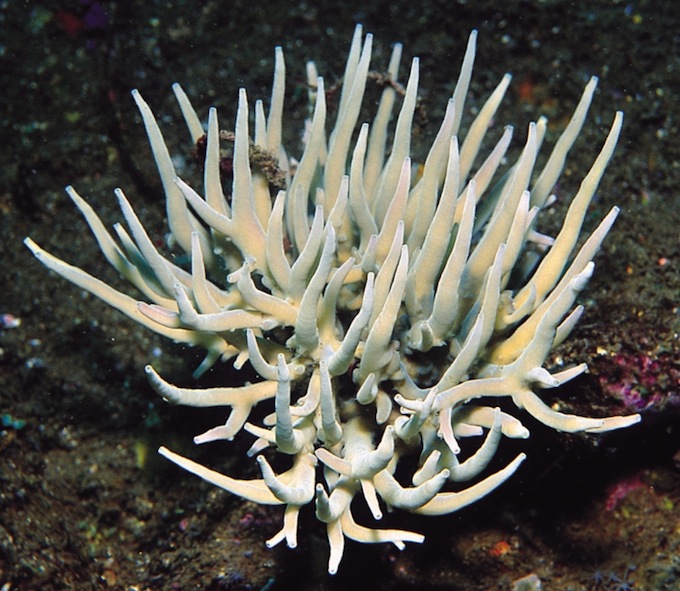We are delighted to welcome Leo den Breejen as the latest addition to our lineup of international contributors. Leo is the creator of such famed aquascapes as the Formosa Forest and Apogon Reef and he’ll be dropping from time to time to share his reefing experiences.
Acropora suharsonoi is found in the central Indo-Pacific and in south central Indonesia on lower reef slopes and submerged walls, from 15 to 25 meter. The genus Acropora is one of the most species-rich of stony coral genera. The number of species is debatable, there are more than 350 species in the genus but there are non quite like the exotic growth and colony shape of Acropora suharsonoi.

Acropora suharsonoi has a restricted range and is uncommon. Colonies are thickets or corymbose clumps with branches consisting primarily of extremely long tapered axial corallites. Incipient axial corallites forming branchlets occur at the base of the main axial corallites. Color varies from grey to beige or green. In nature, Acropora suharsonoi is particularly susceptible to bleaching, disease, crown-of-thorns starfish predation. Acropora suharsonoi occurs in an area likely to be heavily impacted by anthropogenic disturbance, therefore suffering from extensive reduction of coral reef habitat. It has a generally low reproductive capacity and therefore would be slow to recover.

The care for deepwater species such as Acropora suharsonoi is not much harder or different then with other Acropora, depending on the condition and husbandry of the colony that you obtain. It is important to consider their specific needs; moderate light, moderate flow and light with an emphasis on the blue end of the spectrum. When selecting a colony of Acropora suharsonoi, it is usually best to go with aquacultured individuals, coming in from Bali regularly. Even these colonies should only be added to more mature systems.

Always select colonies of Acropora suharsonoi that exhibit good polyp extension, and avoid those with any bleaching or tissue peeling, mainly caused by light shock (placed in high intensity light to quickly). On coral reefs, red and green light penetrates less deep than blue and violet. That is the reason Acropora suharsonoi, which thrives at 15-25 meter, color up and grow better with moderate intensity, blue lighting. I experience that they do very well under T5 lighting with mostly blue and Actinic T5 fluorescent lamps.
In my own reef tank, populated mostly with deepwater Acropora, I have five hour light cycle, using ten T5, six blue bulbs, two pink and two actinics. These conditions give me the best growth and color development in the coral tissue. In my experience, water parameters for deepwater Acros should be the same as for other Acropora Species: calcium 400 to 450 ppm, alkalinity 2.4 to 3.5 meq/L, magnesium 1200 to 1350 ppm, phosphates;0.03 and a water temperature of 76 to 82 degrees Fahrenheit. I found that they are much less sensitive for AEFW infection then for instance Acropora nana and Acropora millepora, but you have to keep in mind that they are very sensitive to Iodine-based pest dips. It is better to use another type of coral pest dip if you suspect infection.
Under optimal conditions described above I find Acropora suharsonoi one of the most beautiful Acropora species, with an interesting growth structure, beautiful colors and surprisingly fast growth.





